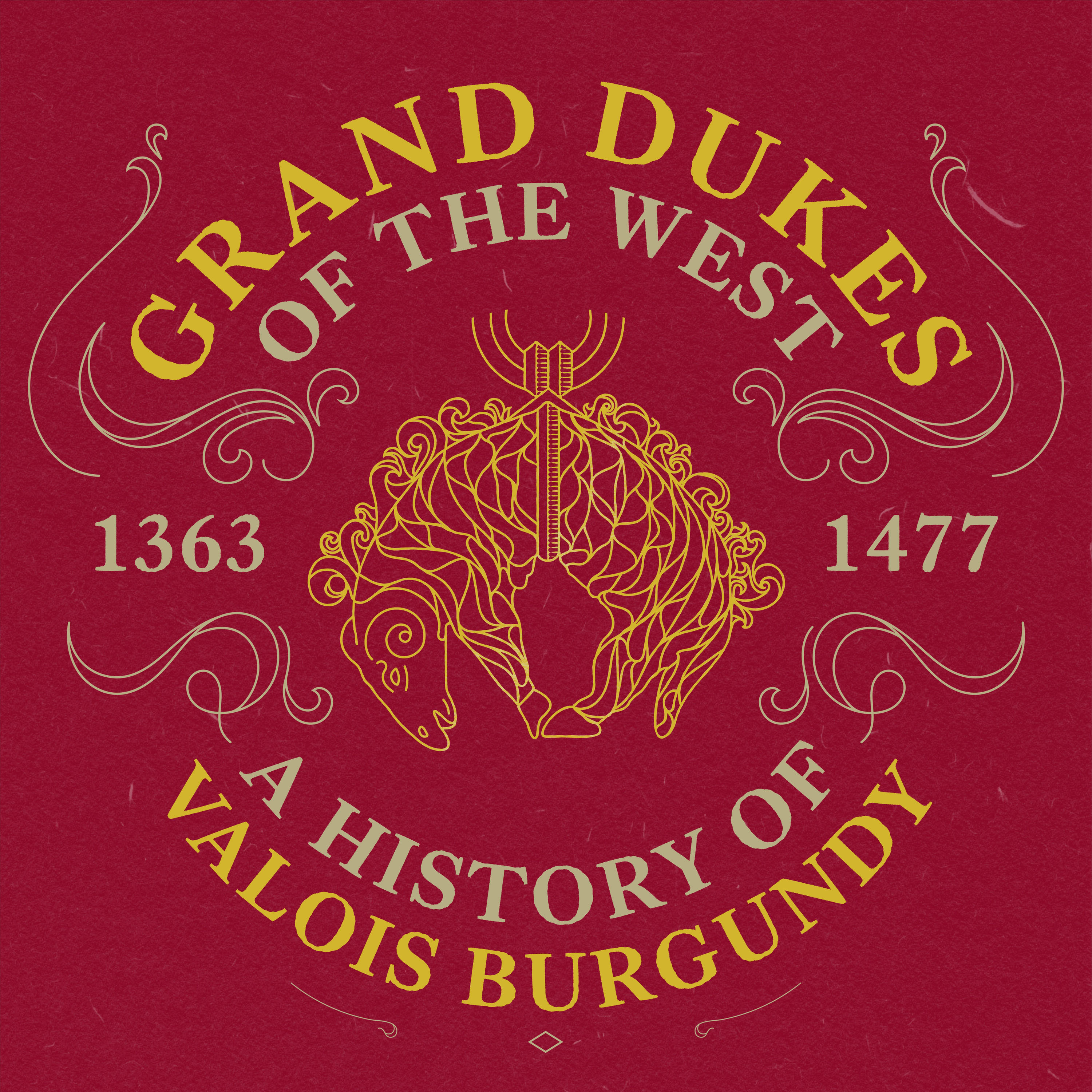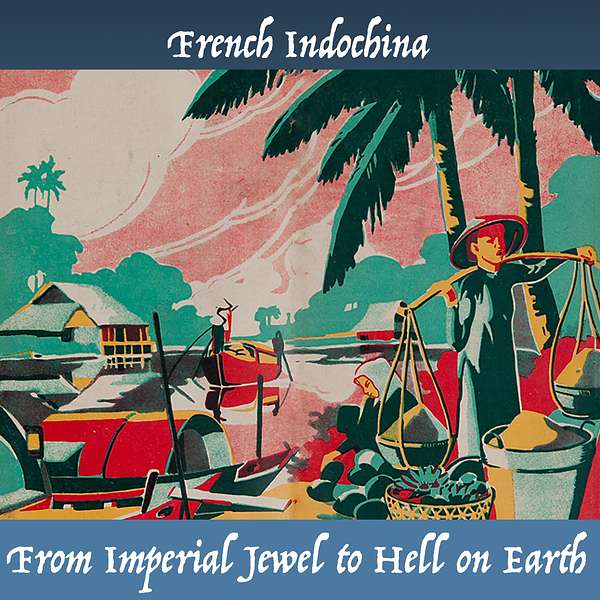
La Fayette, We Are Here!
La Fayette, We Are Here!
French Indochina, from Imperial Jewel to Hell on Earth
"The pearl of the Empire", that's how the French described their colony of Indochina, comprised of Vietnam, Cambodia and Laos. They took over control in the nineteenth century, exploited the place for decades, and finally got kicked out in 1954-55.
It is a story of violence and exploitation. Of colonization and war. Of exchanges and legacies. And sometimes, of beauty. A story also rarely told in France, as the French aren't proud of what they did there.
Let’s find out more about French Indochina; from Imperial Jewel, to Hell on Earth.
Timecodes:
Introduction
03:23- The Second French Colonial Empire
08:26- The Establishment of French Indochina
16:43- A Colony of Exploitation
21:58- Bloody Greed
25:52- World War II and the Vietnamese Emancipation
30:07- The Indochina War
42:43- Conclusion
Music: Marche pour la cérémonie des Turcs, composed by Jean-Baptiste Lully, arranged and performed by Jérôme Arfouche.
Art: Poster for tourism in French Indochina drawn by J. Lhuissier, circa 1920.
Reach out, support the show and give me feedback!
It’s Summer 1961 in Saigon, Vietnam, now called Hồ Chí Minh City. A young American recruit just arrived to fight the dreaded Communist forces, the Viet Cong. On his first day off, a fellow soldier offers him a tour of the city, he accepts. He's shown the sights. The best restaurants, bars and hotels.
The young fellow stops in front of a beautiful building, the “Hotel Majestic”. He asks: “how come it looks like a building from one of those old French movies?” His comrade answers: “well, the French used to own the place. They owned the whole country for that matter”. The young fellow knew about the French involvement here, but not its scale. “And what happened to them?” He wonders. His friend answers: “they got kicked out by the Commies! But don’t worry, we’ll do better”.
The French did own the place before. They had conquered it through force of arms and exploited it relentlessly for decades. Then, they indeed got kicked out of it, with brutal efficiency. Let’s find out more about French Indochina; from Imperial Jewel, to Hell on Earth.
Welcome to "La Fayette, We are Here!", the French history podcast for the American public. I am your host, Emmanuel Dubois, and today we are talking about French Indochina. It is a story of violence and exploitation. Of colonization and war. Of exchanges and legacies. And sometimes, of beauty. A story rarely told in France. As a matter of fact, as a schoolboy, I was barely aware that it was a French colony for almost a century, and I went to a French private school! The French would very much like to forget Indochina, the former colony that comprised modern Viet Nam, Laos and Cambodia. As we’ll see, there is a reason for that, the French don’t have much to be proud of here. And the little good that they did, they did for the worst of reasons.
Americans are often very aware of the Viet Nam war. My little story at the beginning was to illustrate that the Vietnamese, just like their neighbours, had had painful experiences with Western powers before the war. But let's not get ahead of ourselves. Before we talk of Indochina in the 1950's, let's understand how the French got there in the nineteenth century and, more importantly, why. Also, please forgive me for the mispronunciation of Vietnamese, Cambodian or Lao names.
The Second French Colonial Empire
France had been a colonial power since the XVIth century. She had sent ships all over the globe and seized many areas in the name of the French crown. America was by far the biggest French territory abroad. Between New France and Louisiana, the French had a monumental presence in North America, from the Gulf of the St-Lawrence to the Gulf of Mexico. The French also controlled several islands in the Caribbeans, very rich ones that brought home sugar and other natural resources. And of course, the French were deeply involved in the slave trade, making profit out of human flesh and suffering. They also had possession in India and Africa, albeit on a smaller scale. Nevertheless, by 1750, France had a huge colonial empire only rivalled by Great Britain's. But by 1815, she'd lost most of it.
Following the defeat of the Seven Years' War in 1763, the Haitian Rebellion and the Louisiana Purchase, France only had a few islands in the Antilles and counters in Africa left. Great Britain was now the dominant empire, by far. After the Napoleonic Wars, France was a diplomatic pariah. Every other country was wary of France, her army had caused too much destruction and her leaders too much trouble over the last couple of decades. All the other European powers agreed that France should not be allowed to expand in Europe again. And she didn't. But after a recovery period of around fifteen years, those French guns started itching again. Only this time, they would not be directed at other Europeans, but at Africans and Asians.
In 1830, the French started invading what is now Algeria. From the get-go, this is to be a settlement colony. The French want to impose their power over the locals and to be able to settle there, sending thousands and thousands of their compatriots over the years. The conquest ends in 1847, when the Emir Abdelkader surrenders to the French. Algeria will remain in French hands until 1962, eventually becoming French soil by law, divided into departments in 1848. The following years will be marked by increased French expansionism in Africa.
Under the leadership of emperor Napoléon III, the French will vastly modernize their fleet and their army, allowing them to seize vast territories at record speed. They'll invade with overwhelming firepower and subdue any resistance with bloody efficiency. During the 1850's and 60's vast areas of Western Africa and parts of Eastern Africa fall under French control. Same goes from some islands in the Pacific, like Polynesia or New Caledonia. But there was another area ripe for conquest: Cochinchina, roughly the south of modern Vietnam.
The Europeans had been in contact with this area since the XVIth century. It is also known as the Kingdom of Nguyen. In the XVIIIth century, they'd even been trade and diplomatic exchanges between the Bourbon and Nguyen monarchies. Importantly, French missionaries went to this region to propagate Christianity and to help the local power fight off rebels. This intervention proved successful, and the French enjoyed very good relations with the local authorities. However, things changed over the next several decades. By the late 1850's, French missionaries were not welcomed anymore in Indochina and Christians started being persecuted.
In 1858, Napoléon III sees an opportunity. The region is organized as the Empire of Annam, under the authority of emperor Tự Đức. He has two Spanish missionaries executed and the French decide to intervene to "protect their fellow Christians". It's of course an excuse to send troops and, potentially, to seize territory in this rich land. The French emperor authorizes admiral de Genouilly to go and he lands in Da Nang, seizing the town et renaming it Tourane. The French troops had set foot in Indochina, they would remain for a century.
The Establishment of French Indochina
Following their successful, if difficult, first conquests, the French push forward. They take Saigon in 1859 and then keep advancing inland. They want to force the emperor to recognize Christianity as a proper and authorized religion. But more importantly, they want to force him to accept the French presence in the region. The whole area was in chaos. China was also at war with France during the Second Opium War. In that conflict, the French and the British were allies, but both contemplated making territorial gains in the area following the victory. China comes out extremely weakened by that conflict in 1860, and the Europeans are in a position of force.
In 1861-62, the French and the Vietnamese were fighting viciously all over the country. The French wanted huge concessions and reparations. Emperor Tự Đức, recognizing that he was facing superior military might, had no choice but to accede to French demands. With the treaty of Saigon of June 1862, he agreed to pay huge sums to the French, to authorize Christianism and to cede the provinces of Bien Hoa, Gia Dinh and Dinh Tuong.
At the same time Cambodia, just north of these territories, was witnessing the French expansion. Her king, Norodom I, sought French support against his adversaries in the region, notably Siam (modern Thailand) and Vietnam. The French see their chance and in 1863, Cambodia officially becomes a French Protectorate, following a show of naval force to impress the Cambodians. Siam will recognize this in 1867 and the French now had a very solid footing in the region, and it would only grow stronger over the next decades. These are perfect examples of the European "gunboat diplomacy" widely used during this time period. They would send a powerful vessel in a port and bombard the locals into submission, sometimes even before asking for a meeting or negotiation. Bullying at the State level.
There is another important thing to keep in mind here. Contrary to their efforts in Algeria, the French had no intention of settling Indochina. What they wanted was resources, prestige, strategic advantages and an open route to China. Indochina was always meant to be a colony of exploitation. And indeed, it will prove to be rich and highly profitable for France, less so for the Vietnamese, Cambodians and Lao. Therefore, the French will send troops and resources but not that many French settlers.
During the 1870's, the French keep pushing albeit with less resources, as they are quite busy in Europe. During the Franco-Prussian war of 1870-71, the French are defeated, Napoléon III is captured, the Second Empire falls, and France loses Alsace and Lorraine. So obviously, the colonial enterprises are put on a hold, or at least support from Paris is put on a hold. I encourage you to listen to my episode on the Franco-Prussian war, released in June 2022, to get a better understanding of the conflict and its consequences.
Back in Asia, the French already established in Cochinchina still want to push north in the region they call Tonkin. In 1873, they get their chance.
The French businessman Jean Dupuis is blocked at Hanoï by the locals. Cochinchina's governor, Marie Jules Dupré, orders lieutenant Francis Garnier to go and retrieve him. But he also has secret orders. These are to establish a French presence in Tonkin and to seize the biggest city there, Hanoi. He does so, and by 1874, the French had forced the local authorities, called the Annamites by the French, to accept French commerce in the region. However, it is not all smooth sailing for the French, as they face resistance from the local authorities and from paramilitary groups, like the famous Black Flags. They ambush and kill Garnier along with many of his men in late 1873, but the French were undeterred, only slowed down.
By the late 1870's, France's economy is on the rise and she is looking to recover her lost honour of the last war agains Prussia, now the German Empire. The French decide to pour more and more resources in the colonial empire and in 1882, captain Rivière is tasked with a new expedition in Tokin, to subjugate to Black Flags and the Annamites. Rivière is killed during the operation while at the same time, in Paris, Jules Ferry, now "Président du Conseil", the head of government during the Third Republic, secures funds and thousands of troops to be sent in the region. The French economy is booming, her military wants to prove its worth and her people want glory. All the ingredients are here for France to take over the whole region, once and for all.
The Black Flags and the Vietnamese fight the French tooth and nail. The French are also at war with China from 1881 to 1885, the Chinese fearing French expansionism in the region. The Chinese fair well on the ground, but their fleets are regularly defeated by the French. In the end, the Chinese have to accept defeat and won't interfere with French affairs in Vietnam, at least not for the time being.
Also in 1885, general de Négrier takes Lạng Sơn, only to be forced into a retreat a few weeks later. Even though it's a minor setback, the French government falls over this failure. The new government pushes even harder. In 1887 the French governor Paul Bert reorganizes the region into the Union générale indochinoise or Indochinese General Union, comprising Cochichina, Annam, Tonkin, and Cambodia. This is the official birth act of the colony of French Indochina.
There is another country involved here, Laos. Laos is stuck between Vietnam and Siam. This kingdom is partly under the rule of the Chinese to the north and the Siamese to the Southwest. Following the strengthening of French colonial forces and fearing a Siamese invasion, Laos becomes a French protectorate in 1893. All-in-all, French Indochina is over 737,000 square kilometres, roughly 285,000 square miles. Siam is the only non-colonized country in the region, acting as a buffer State between French Indochina to the East and British Burma to the West. Even though there will be more conflicts, the main effort was accomplished. At the turn of the Twentieth century, France reigned supreme over Indochina. Now, she would exploit it.
A Colony of Exploitation
Although Jules Ferry had said in 1882 that the French went to Indochina to, accomplish a, quote "civilizing mission", the reality was that they went there to make money, clear and simple. One of the main resources of Vietnam is the hevea tree, more commonly known as the "rubber tree". Rubber was a very sought after resource, both for the booming European industries and for the military. An excellent example of that is the tire manufacturer Michelin, launched in 1889 by André an Édouard Michelin, two brothers from Clermont-Ferrand. Without this abundance of rubber coming from the colony, it wouldn't have become the huge company that we still know today.
The French spent the next couple of decades consolidating their presence in Indochina, enriching themselves and spreading the Western way of life, with a remarkable disregard for the local culture. Although they keep the Emperor of Amman in place, as well as other local figures, the real authority lays in the hands of the governor. Paul Doumer will occupy that role from 1897 to 1902 and will have major structural work started, including the North-South Railway, named at the time the Transindochinois. It is still in usage today.
Doumer establishes the modern colonial administrative apparatus of the colony, he also has French schools and banks established over the country. He creates new taxes on salt, opium and rice alcohol, making Indochina very profitable, the most profitable French colony in fact. He's also very strict and rigid, ousting Vietnamese, Cambodian and Lao functionaries and nobles in favour of French colonial functionaries. As time goes on, the Indochinese, as the French call them, have less and less impact on the activities of their own country.
The combination of three States into a sole colonial entity also caused problems. These States had different histories and culture, so having all of them in one colony created tensions that will accumulate over the decades, as we’ll see in the 1960s and 1970s when there’ll be conflict against the Americans but also amongst Cambodia, Vietnam, Laos and China. The French had little regard for the different culture under their rule. To them, they were all "yellows", "brutes" and "savages". A sad past and truth, one that the French would like to forget as I said earlier, but it should not be forgotten.
The French, like most of their European counterparts, took over Asia and Africa not because they were superior, but because they had better guns, simple as that. In the twentieth century, when the Vietnamese saw a weakness in French rule and managed to get their hands on similar military equipment, the so-called "superior" civilization did not fare that well, as we shall see a bit later.
When World War I begins in 1914, France and Great Britain have a huge advantage over Germany and her allies: their colonial empires. Many colonial troops fight in both countries' armies in France and the colonies provide tons of resources. The aforementioned rubber is crucial for the French, but they also receive charcoal, rice and money from their Asian colony. In 1918, France and her allies win the war, partly thanks to their colonies. Although the French have regained Alsace/Lorraine and are seen as the biggest military power in the West, the colonized people of Indochina also heard the words of American president Woodrow Wilson and of Soviet Premier Vladimir Lenin regarding the right of a people to self-determination. It's the beginning of the civil contestation of French rule in the region.The French recognize this and in 1919, governor Albert Sarraut proposes an Indochinese charter, giving some democratic rights to the "indigenous citizens” as he calls them. In 1922, the reform is implemented and ten out of the twenty-eight seats of the Colonial Council of Cochinchina are elected by native voters. A modest effort, but nevertheless a recognition that the colonial power should share her power with the locals. Of course, the French would never accept to share enough of that power and would increase the exploitation of the population.
Bloody Greed
The 1920's and early 30's are marked by a couple of factors. First, is the rise of Japan in the region. Japan had been largely seen as a small regional power in the late nineteen century. But following the country's victory over Russia in the naval conflict of 1904 and its rapid industrialization, it was now a rival to European power and interests in the region. The French invested millions in Indochina, with tremendous economical results. Mineral production was multiplied by a factor of nine from 1900 to 1929, rice and coal by a factor of four. Rubber exports kept increasing, with the vast majority of concessions being owned by French companies, the biggest one being Michelin. But all of that took a toll on the local population.
If being a miner in a coal mine in northern France was no picnic, being a "indigenous" worker under French rule was downright slavery. As the French grew richer, the Vietnamese, Cambodians and Lao grew poorer. They got help from advances in medicine and some French doctors genuinely aided the population by providing care and medication, but overall the Indochinese lived in horrible conditions. The French offered them ridiculously low wages, making European industrial goods unaffordable for the majority. Local craft compensated to a point, but the inequality nevertheless grew bigger between both world wars.
Little effort was made to bring better education and healthcare to the population. At a time where France was offering better and better social services to her metropolitan population, her colonial citizens didn't get any of that. Some major cities underwent major transformation, with beautiful baroque buildings being built. But these only profited the Europeans and American tourists. Tourism was extremely strong in Indochina, with thousands of rich westerners visiting the country every year. It is during this period that a Vietnamese nationalist movement grew stronger and stronger.
Some Vietnamese wanted to negotiate with the French, to obtain better treatment while remaining a colony. Others wanted to get closer to Japan and to maybe join them as fellow Asians. Others simply wanted to kick foreigners out and to get control of their country back. Various Vietnamese parties and groups formed and affronted each other on the best way to go about this. There even was a mutiny in 1930 were Annamites soldiers killed their French officers, but it didn't provoke the hoped massive uprising against the French. The French responded in kind and by 1933, they had killed or imprisoned everyone involved.
Some of these movements united under the banner of the Indochinese Communist Party, who managed to win some local elections. The French forbid the party and they made it clear that they would not accept any challenge of their authority. Nevertheless, they accepted to make some changes. They established a minimal wage, authorized associations as well as some others half-hearted measures. But as was the case in 1871, the major change for Indochina would not come from the French or the Vietnamese, but from the Germans
World War II and the Vietnamese Emancipation
In September 1939, France and Great Britain declared war on Germany. In May-June 1940, the German Wehrmacht utterly defeated the Allied armies. The British had to flee France during the Dunkerque evacuation, and the French themselves had to ask for an armistice. I encourage you to listen to my April 2023 episode on the Fall of France to better understand what happened during this critical time.
Germany had an ally in Asia: Japan. The Japanese could have invaded Indochina, but the collaborationist Vichy regime prevented that. It's a unique case in the area. After December 1941 and the entry of Japan in the war, most British and American possession in Asia and the Pacific were attacked by the Japanese, but not French Indochina. In August 1941, the French signed the Darlan-Katō accord, allowing the Japanese to use French airports and naval bases, while the French remained in control of the colony.
The Japanese increased the pressure on Indochina, forcing the Vietnamese to work even harder for the war effort. The French were still in charge, but they had to supply the Japanese with what they demanded. And, as usual, the Vietnamese, Cambodian and Lao paid the price with their blood. All the while, the Japanese entertained discussions with the Vietnamese nationalists. They exposed them to their propaganda of an Asia ruled by Asians. Of course, in their minds, it really meant "Asia ruled by the Japanese", but the Vietnamese got the message. The French days in Indochina were numbered.
The main nationalist movement at the time was called the Front for Vietnam Independence, or Việt Nam độc lập đồng minh in Vietnamese. We now it better by its abbreviation: the Vietminh. One of its members was Nguyên Ai Qhoc, latter known as Hô Chí Minh. Another was Vo Nguyên Giáp. These men would bide their time and wait for the French to be weak enough to strike at the colonial government.
The time came in March 1945. On March 9th, the Japanese seized power in Indochina, effectively removing and disarming the French. They feared that France would attack them from this base, now that the Vichy government was gone. This has a huge impact on the region. A few days later, the Kingdom of Cambodia declares its independence.
In Vietnam, the Vietminh also acts. They want to prepare a general uprising but have to deal with the fact that the Provisional Government of the French Republic, presided by Charles de Gaulle, as made it clear that they want to retain Indochina, by force if necessary. Hô Chí Minh is wise and patient. He has discussions with the Americans, explaining that he can drive the Japanese out of Indochina with their support. They give it to him and the Vietminh fight the Japanese, liberating huge parts of the country.
When Japan is defeated in August 1945, following the nuclear bombings of Hiroshima and Nagasaki, Hô Chí Minh is the only one left in charge. Although president Harry Truman supports French rule in Indochina and the French themselves are already preparing to come back, he proclaims the Democratic Republic of Vietnam on September 2nd 1945 in Hanoi. War was looming once again in Indochina.
The Indochina War
De Gaulle had no intention of letting Indochina go. Like most Frenchmen, especially the military, the humiliation of 1940 had left very deep marks. Plus, de Gaulle's views at the time was that France deserved her empire and that she should keep it at all cost. An expeditionary corps, led by General Leclerc, arrives in Hanoi in October 1945. The situation is chaotic. Chinese troops enter Tonkin, French troops are entering the country, the Vietminh are everywhere, the Lao make demands. Strikes, riots and even massacres happen in the cities of the country.
Nevertheless, the French manage to reinstate their authority in most of Cochinchina and Cambodia, even if they have to make many compromises. They also benefit of the support of the British and the Americans. They have more troubles in Tonkin, in the north, were the Vietminh is way more powerful than in the south. Leclerc moves north, forcing Hô Chí Minh to negotiate, he needs time. At the same time, Vietnam is recognized as a country, along with Laos and Cambodia, within the context of the Union française, or French Union.
This new political structure was meant to improve the management of the French colonial empire and to allow France to retain her colonies. In theory, the "indigenous" were supposed to get the same rights as the French citizens living in France. Education and social services standards were supposed to be levelled across the empire and democracy was to increase everywhere. In practice, very little improvements actually reached the average Vietnamese, Cambodian, Algerian or Senegalese. Behind their principles and words, the French still intended to rule over their colonies as masters, only accepting concessions when they had no other choice. So much for the "civilizing mission"...
Hô Chí Minh is invited in Fontainebleau, France, in August 1946, to negotiate the status of Vietnam within the Union Française. Hô Chí Minh had hopes that the French would offer good concessions to Vietnam. General Leclerc himself favours negotiations, even discussions about a potential independence. But the French negotiators don't want to hear it. They have their nice little concept of that "semi-autonomous" status of a sovereign Vietnam within the Union française and they don't want to give anything else to the Vietnamese or the Vietminh. They consider Hô Chí Minh to be a nuisance and his movement to be weak. They believe that if they need to, they can crush him easily. They are sorely mistaken.
Hô Chí Minh leaves France in September 1946 knowing what the next step is: to initiate a guerrilla warfare against the French. Leclerc knew this was coming and had tried to warn the French government, but to no avail. France had at the time 50,000 troops in Indochina, the Vietminh could count on many times that number. Things were about to get rough, really rough.
On November 23rd 1946, three French warships are in the port of Haïphong in northern Vietnam. The Vietnamese don't want to let the French seize a Chinese junk that carries contraband. Events escalate. Shots are fired, six French soldiers are killed. The French warships open fire on the city. They will shoot hundreds of shells, wanting to make an example and to intimidate the Vietnamese. The "Haïphong incident" claimed the lives of over 6,000 Vietnamese. That's why I prefer its modern appellation, the Haïphong massacre. The Indochina War had begun.
I won't go into all the full details of the war as it would take me hours, but I will give you the broad strokes. The French send artillery, planes, trucks and men to Vietnam to find and destroy the Vietminh's forces. The Vietminh, on the other hand, use the terrain and take advantage of the support of the population, especially in northern Vietnam. At first, they use guerrilla tactics, to harass the French forces and to limit their movements. They have control over many villages but also have support in important cities like Hanoi, Huê or Saigon. By 1949, they have a firm hold over Tonkin, Minh and the delta of the Mékong. On the other side of the border, Mao Zedong and his communist forces seize power in China. Starting in 1950, they start to offer great support to the Vietminh and the war changes altogether.
The Vietminh started as a ragtag guerrilla army, but it soon evolves past that. Under the political leadership of Hô Chí Minh and guided by the great general Vo Nguyên Giáp, they will transform that force in a full-fledge professional army in record time. The Chinese will provide weapons, artillery, airplanes and supplies. The Vietnamese will use these remarkably well, to the great surprise of the French who didn't expect that. Another surprise party are the Americans. Although they aren't directly present in Indochina, they are fighting the communists in Korea. They are also supplying the French with over two thirds of their military equipment. France still hadn't fully recovered from World War II and needed that support. The Americans fully expected to see the French triumph over these quote and quote "rebels".
Even though the Vietnamese emperor Bao Daï negotiated greater autonomy for his country within the Union française in 1948, it was too little, too late. The Vietminh will settle for nothing else but complete independence. In 1950, the French are pushed out of their strongholds in northern Vietnam, one after the other. Lao Kay, Ha Giang, Bao Lạc, Lang Son and others fall to the Vietminh who use camouflage, infiltration and surprise to great effect. The French are reduced to a defensive strategy, they completely lost the initiative to their adversaries.
The general de Lattre de Tassigny tries to reinforce the French position when he takes over the army in Indochina at the end of 1950. He restructures the army, enrols thousands of Vietnamese in the French forces and manages to win a few small victories but has to leave because of his failing health. He's replaced by general Salan who puts into place a stronger defensive system. He's also responsible for the capture and torture of many, many Vietnamese, to extract information. The French were growing desperate and they were still clinging to their empire. This brought out the worse out of certain men, like Salan.
The Vietminh conquer more and more territory, little by little, but no decisive blow is achieved. By 1951-52, they have a divisional army, capable of waging pitched battles with artillery and air support. The French army has to deal with an enemy capable of the most acute guerrilla warfare and of holding his ground on the field of battle. A remarkable feat on the part of the Vietnamese. Finally, after years of this, the conflict had to be brought to an end, by some way or another.
While the conflict is raging in Vietnam, the situation becomes untenable in Cambodia. The king, Norodom Sihanouk makes his case, explaining to the French that a strong and independent Cambodia is the best rampart agains communism and the Vietminh. The French don't want to hear it and reject his proposal for Cambodian independence, for a time. Fearing the opening of another conflict and after months of negotiations, the French have no choice but to give in. In July 1953, they accept to negotiate and to give back some authority to the Cambodians and on November 9th the kingdom declares its "complete independence". Discussions will continue for months, but Cambodia took advantage of the war in Vietnam to negotiate her own independence very effectively.
In 1953, the Vietminh were in a very strong position and even entered Laos. The new French commander, Henri Navarre, wants to find general Giáp's army and to inflict a serious blow to them. He advances westwards and choses a spot where he thinks he can take on the Vietminh, the plain of Diên Biên Phu, about 250km west of Hanoi. The French believe the terrain to be too hazardous for the Vietminh artillery to move effectively into position. They also intend to use the local airstrip to be resupplied by air. By doing so, they think they can defeat Giáp's army and force it to retreat out of the area.
Giáp and Minh have exactly the same objective as the French: to inflict a decisive defeat. Contrary to what the French military think, they are perfectly able to position their artillery effectively and they are capable of shooting with extreme accuracy. They still use the terrain to hide it, rendering the French air raids totally inefficient. They also have thousands and thousands of coolies supplying their front line while the French struggle to get resupply. It is in those conditions that the actual battle begins in March 1954.
The Vietminh manage to take out the French airstrip in a couple of weeks. They dig trenches, install strongholds and keep pressuring the French. Over 50,000 Vietminh troops are present, agains 10,000 French. Giáp had the French right where he wanted them. At the same time, in Geneva, both parties started negotiations for a settlement. The battle lasts two months and is extremely bloody, with thousands of dead and wounded on both sides. Estimate vary, but we're talking of about 2300 dead for the French and 8000 for the Vietnamese, with twice that number of wounded. On May 7th, the French surrender.
Back in Europe, the French government falls following that defeat. And on July 21st a ceasefire is signed. Vietnam is divided at the 17th parallel into the Democratic Republic of Vietnam to the north and the State of Vietnam to the south. The French troops in Tonkin have to leave. The French leave the territory gradually and by December 1954, there are no more federal links between Vietnam, Cambodia or Laos and France. In 1955, the last members of the French expeditionary corps leaves for good.
Conclusion
Under Emperor Bảo Đại, the State of Vietnam won't abide by the terms of the treaty. In 1955, the emperor will be deposed by Ngô Đình Diệm and the Republic of Vietnam will be proclaimed. Another country didn't accept that treaty: the United States of America. The Americans will support Diệm's struggle against the communists who will answer with the creation of the National Liberation Front of South Vietnam, better known as the Việt Cộng. This will be the beginning of the Vietnam War, a conflict that will claim two to three million lives, after the half-million that just perished in the Indochina war.
What to say of the French "adventure" in Indochina? Under the pretences of saving fellow Christians or of bringing civilization, they mostly managed to loot, kill exploit and destabilize a whole region for decades, maybe more. Look at the years after the end of the Indochina War: the Vietnam war, that will last until 1975; the arrival of the Khmer Rouge in Cambodia, that will be responsible of 1,7 million deaths between 1975 and 1979. All of this for what? Imperialist glory? Greed?
The French called Indochina "la Perle de l'empire", the "pearl of the empire", because it was so rich and brought so much to France. Even though the French did build modern infrastructures, schools and other amenities in their colony, these were meant to help the small local elite and the French themselves, not the majority of the locals. I've heard French people say that "we did do some good over there". Well, I'm sorry but no. The French came with guns, imposed their authority with guns and kept the population in check with guns. And in the end, they were ousted by guns. The little good that they did was for their own profit.
Indochina is barely touched upon in the French scholar system. As a kid growing up in France, I only knew about it because of stories told by my parents and by the song La Petite Tonkinoise, The Little Tonkinese. But the French should not try to forget what they did to the Vietnamese, to the Cambodians and to the Lao. They should own it. They should recognize it. It's the only way to move on and to grow. And hopefully, the civilizers shall become, more civilized.
Thank you for listening, au revoir.
Podcasts we love
Check out these other fine podcasts recommended by us, not an algorithm.

Generals and Napoleon
John W. Viscardo
Shipwrecks and Sea Dogs
Rich Napolitano
French Revolution & Napoleon (Grey History)
Grey History (William Clark)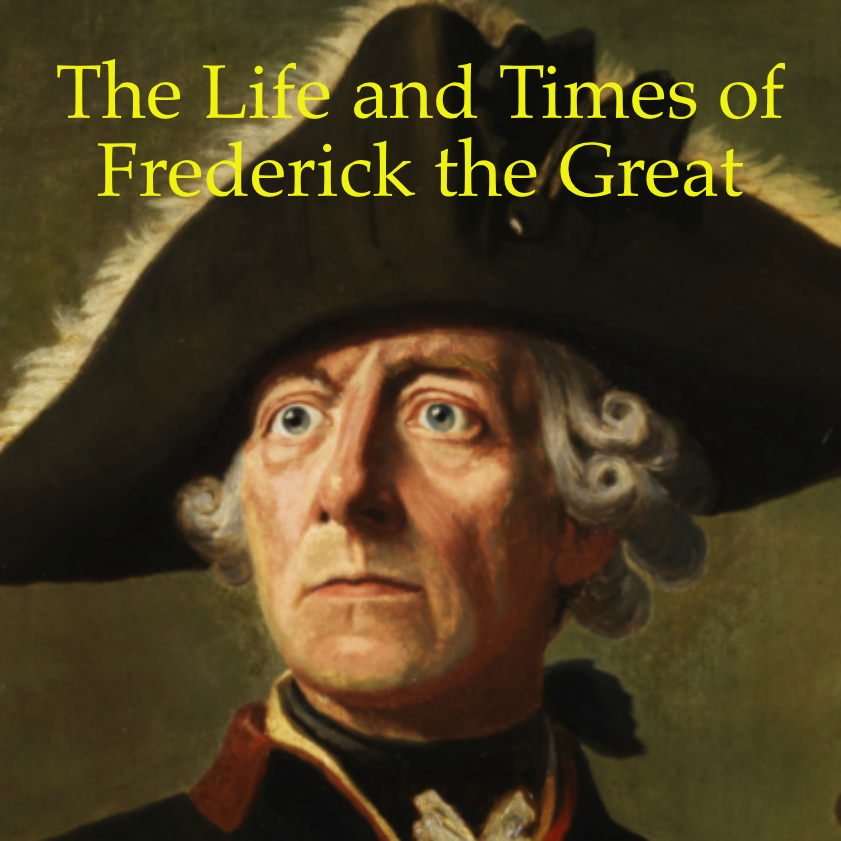
The Life and Times of Frederick the Great
Alec Avdakov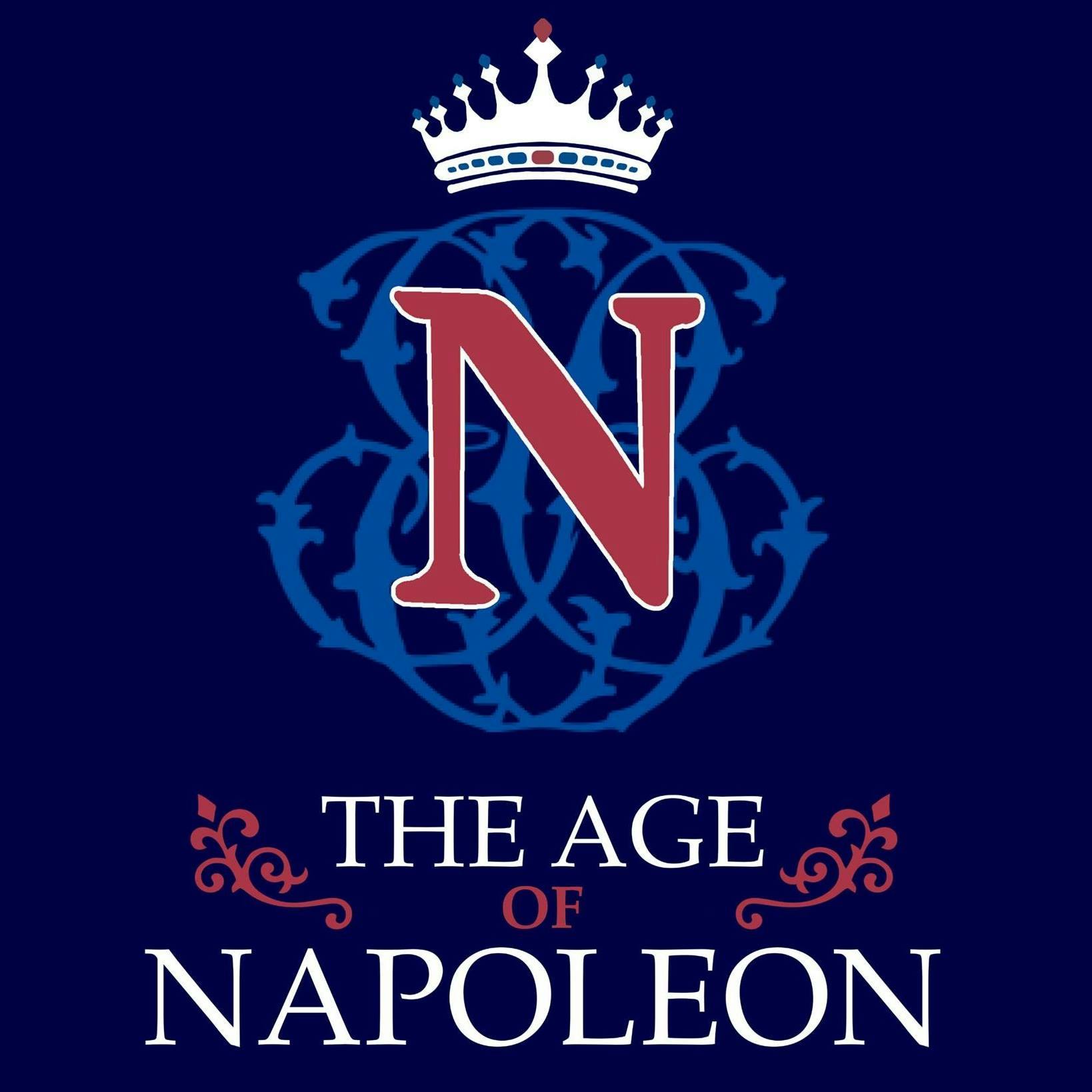
The Age of Napoleon Podcast
Everett Rummage
The Siècle History Podcast
Evergreen Podcasts
The Napoleonic Wars Podcast
Zack White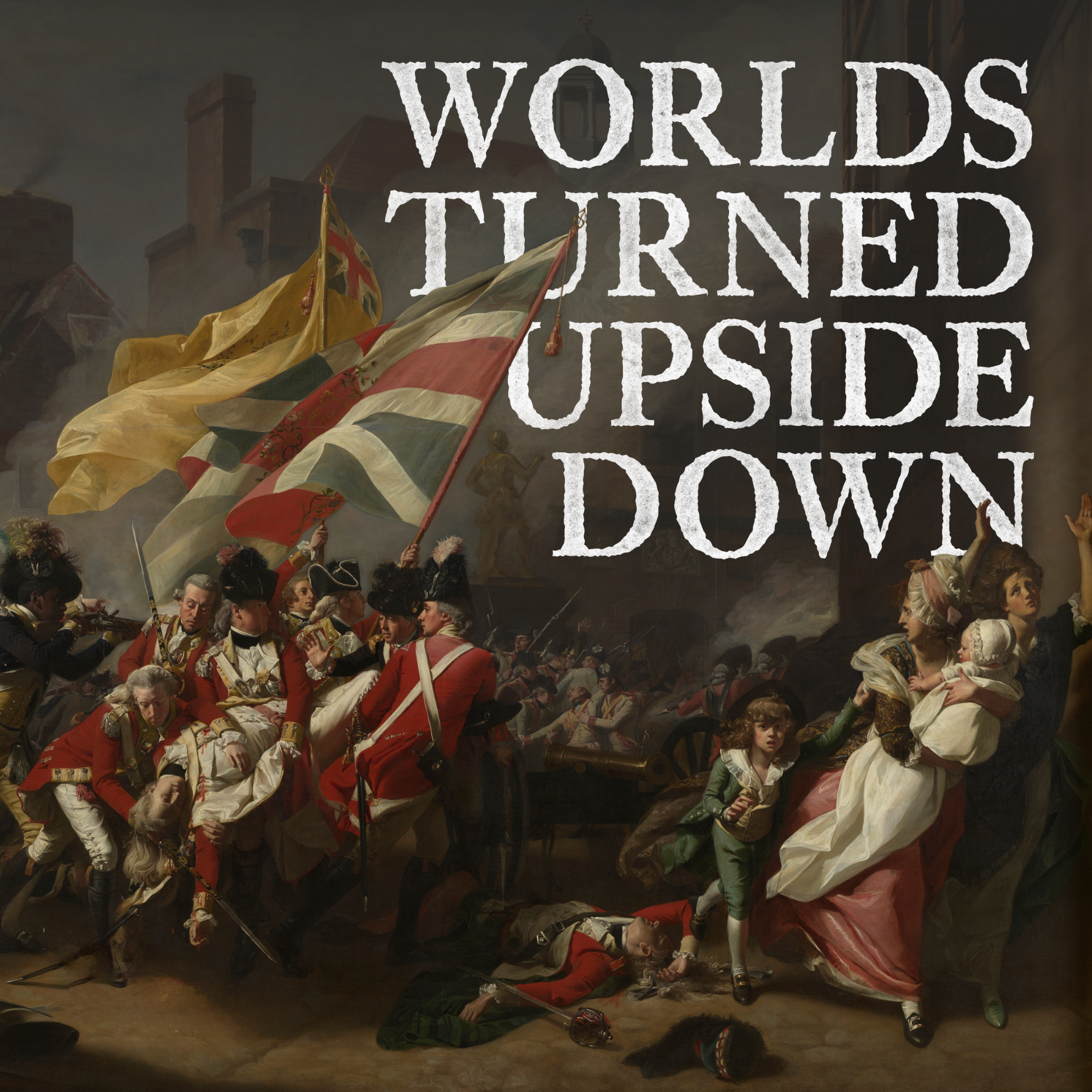
Worlds Turned Upside Down
Roy Rosenzweig Center for History and New Media
Empire-Builders
David Mainayar
Battles of the First World War Podcast
Mike Cunha
New York, Quebec, and The Water Route to the Center of the World
William Matthews
Deep into History
Deep into History
Battle Royale: French Monarchs
Ben Clarke and Eliza Sommers
A History of Japan
Justin Hebert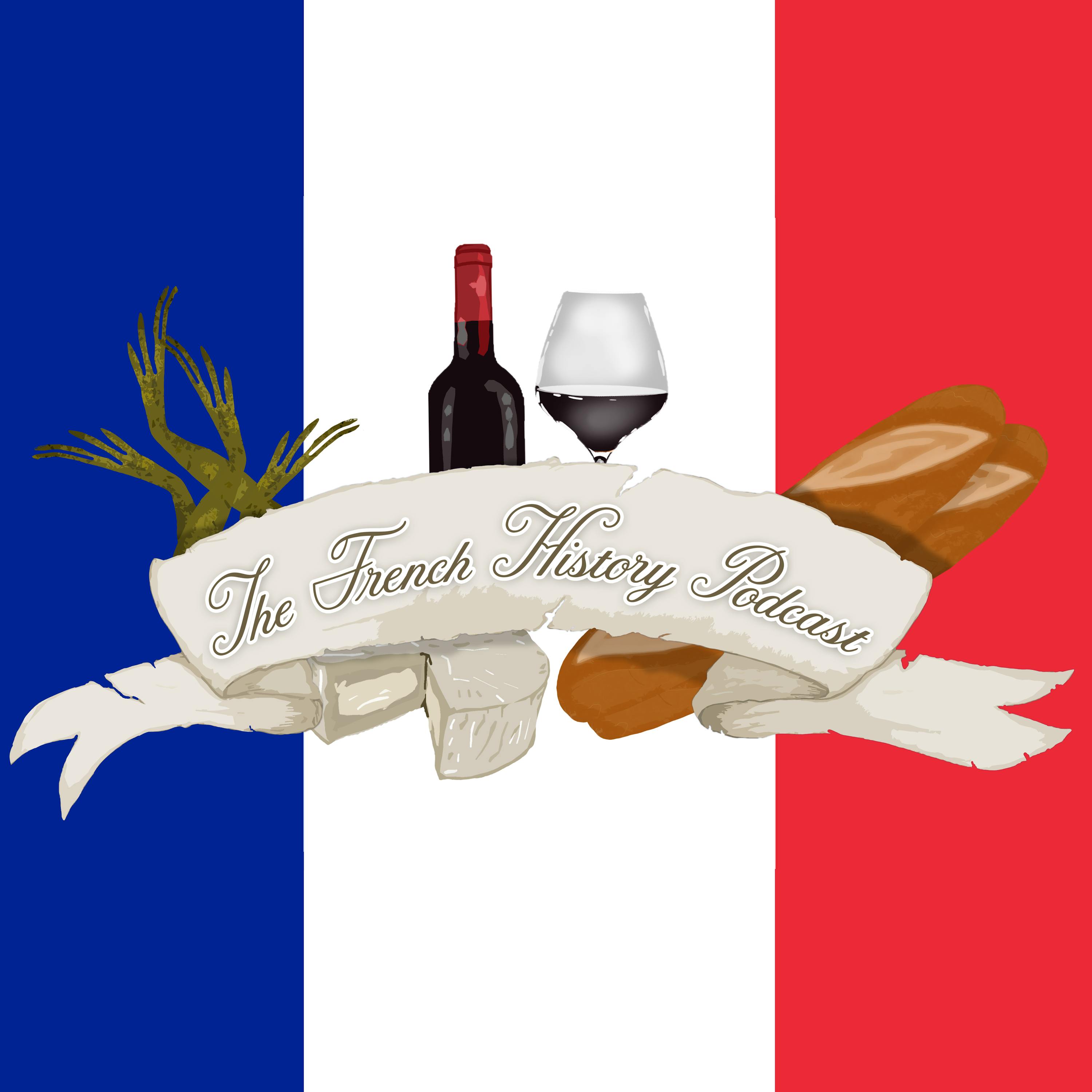
The French History Podcast
Evergreen Podcasts
History of the Germans
Dirk Hoffmann-Becking
Half-Arsed History
Riley KnightFrench-Canadian Legacy Podcast
French-Canadian Legacy Podcast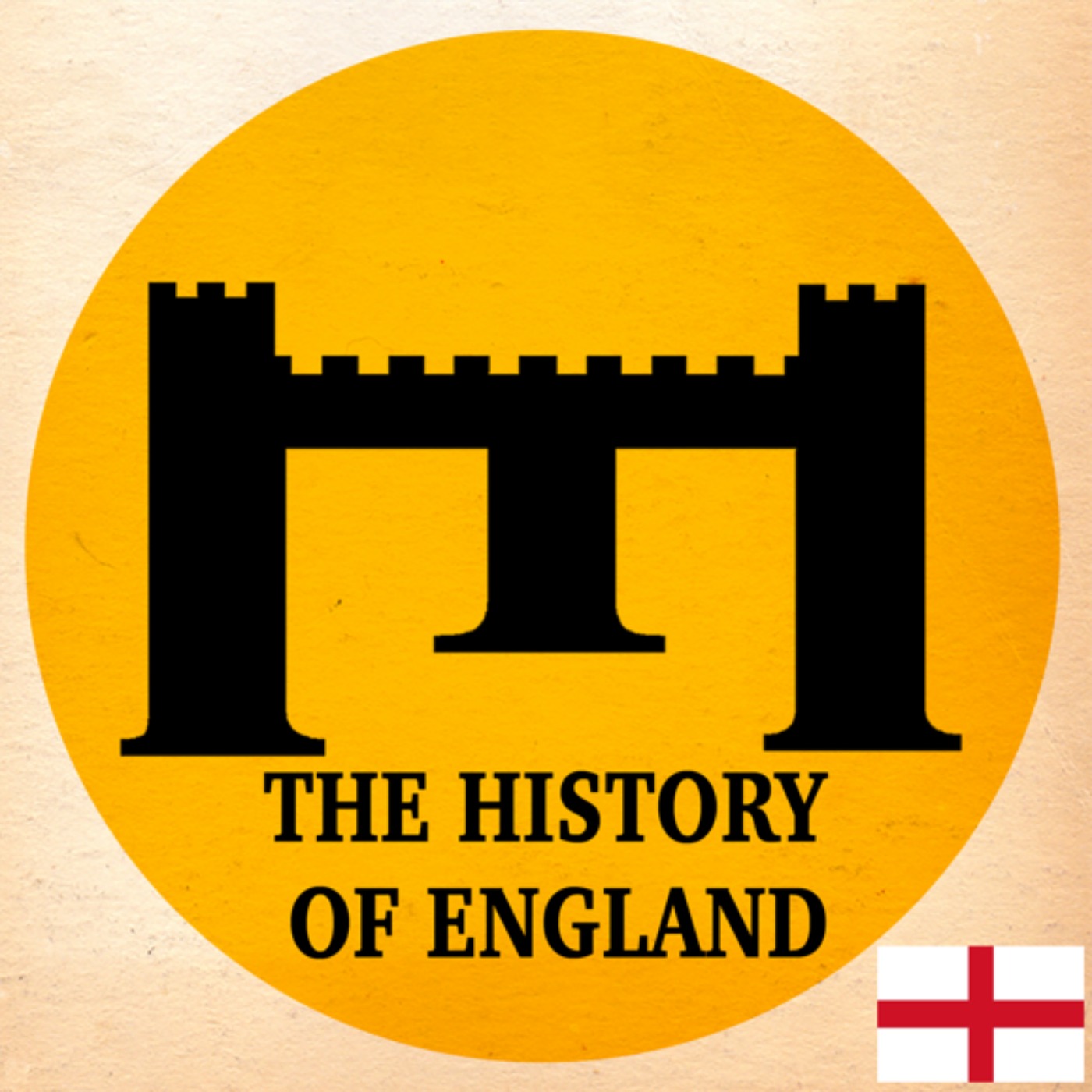
The History of England
David Crowther
Canadian History Ehx
Craig Baird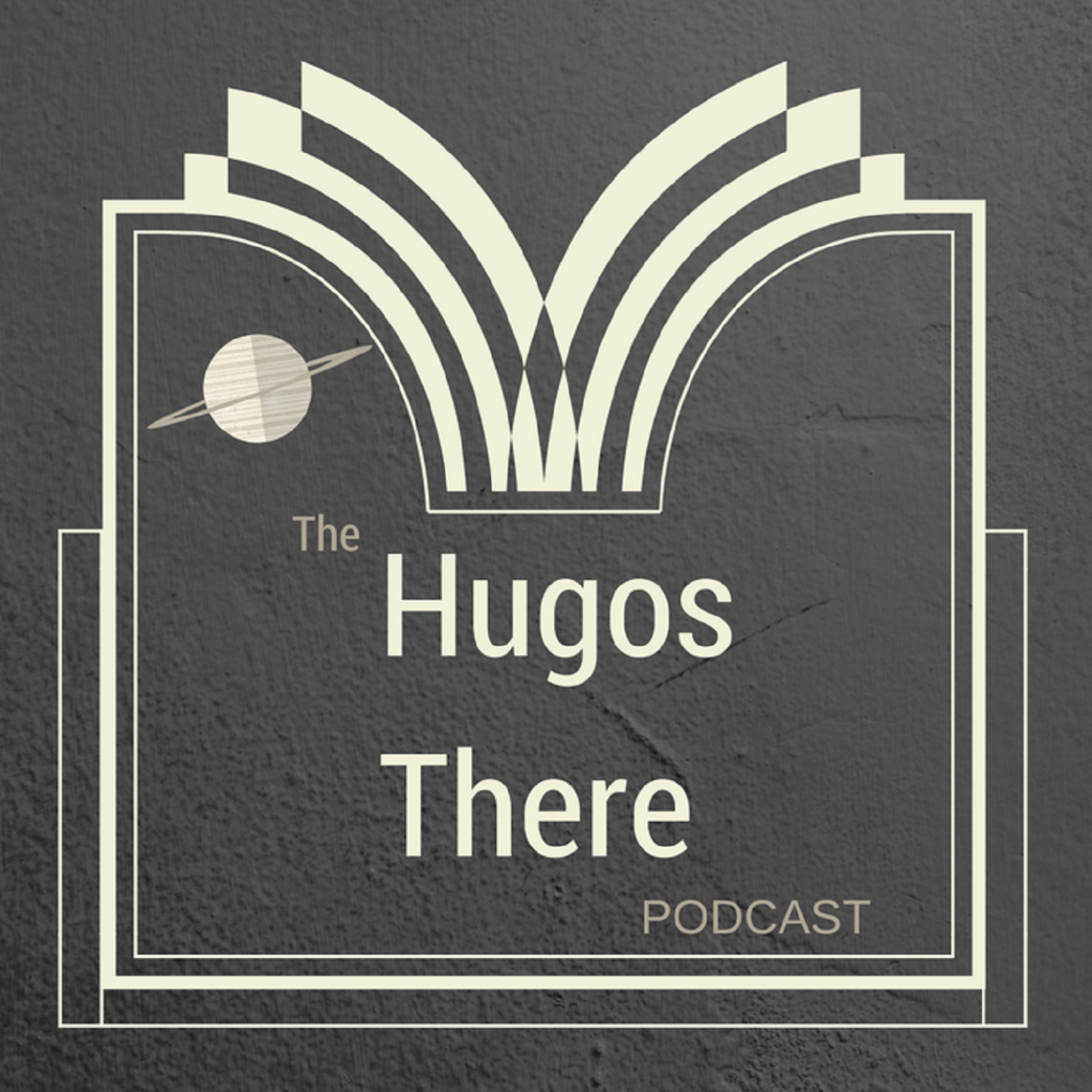
Hugos There Podcast
Hugos There Podcast
Hugo, Girl!
Hugo Girl

